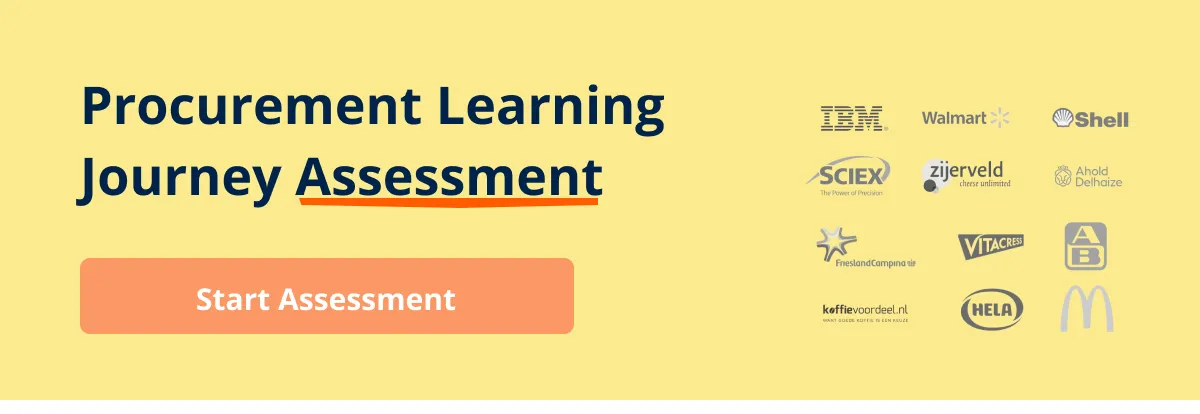Written by Marijn Overvest | Reviewed by Sjoerd Goedhart | Fact Checked by Ruud Emonds | Our editorial policy
Walk Away Point — The Secret of Stopping a Negotiation
Key take-aways
- A walk away point is where a negotiator feels that there is no point in continuing the discussion further.
- The key to knowing how to walk away from negotiations is to have your table of negotiation variables ready.
- There are many indicators for knowing when to walk away from negotiations, such as not giving up on a disadvantageous offer.
Yes, everyone wants to get that sweet deal. You ponder day in and day out about how to prepare for the negotiation. But one must also know that there should be a perfect balance between pursuing a deal too hard and when to let go. Negotiate too hard and you’ll end up getting frustrated for every rejection you meet. But negotiate timidly and you’ll likely end up losing money to every bad counter offer.
But before you start to read this article, I have created a free-to-download editable in-negotiation toolkit template. It’s a PowerPoint file that can help you create the best approach when negotiating with other parties. I even created a video where I’ll explain how you can use this template.
What is a Walk Away Point in Negotiation?
A walk away point is, simply put, that very moment where you recognize that there is no point in continuing the negotiation because the offers do not align with what you want.
Sounds simple, doesn’t it? The basic truth, however, is that it isn’t.
If every negotiator or procurement manager recognized every walk away point during a negotiation, then there’d be no point in writing this article. Recognizing this opportunity could be as slippery as finding and catching an eel in a murky river.
And even if you do find it, what do you do afterward? Do you stand and leave, hoping that the other party will realize that you’ve already seen their game and hope that they’ll give you a call again right away?
The answer might be a resounding yes ONLY if you’ve prepared yourself beforehand.
Prepare Negotiation = Prepare Walk Away Point
For this, I’d like to quote a venerable Chinese strategist for giving mankind the best advice when it comes to preparation.
“The general who wins the battle makes many calculations in his temple before the battle is fought.”
- Sun Tzu, Art of War
Preparing for the negotiation will always give you the edge over the other party before, during, and even after a negotiation.
Knowing how the other party negotiates will not only help you come up with excellent negotiation skills and offers during the meeting itself but will also help keep the meeting cordial and professional.
While standing in front of a mirror and practicing your “best” voice that you’re going to use for the meeting helps, you also need a detailed plan and strategy. This will be your best offensive and defensive option during the whole negotiation.
Think of the following variables as your strategy for an upcoming negotiation:
- Gather information
- Clarify the relationship between you and the other party.
- Any past decisions or negotiations must no longer be part of the current negotiation
- Decide who will propose first. Will it be you or the other party?
- Create a table of negotiation variables while gathering information.
- Envision a structure where the desired outcome is achieved by both parties.
- Determine your walk-away point.
When to Walk Away in a Negotiation?
If you remember the variables listed for preparing for the negotiation, then one should always have a table of negotiation variables ready. This will be your key to recognizing your walk away point.
You can take notes on this or have this ready in your head. Whatever your strategy is, the following variables should always be as clear as the day before and during the negotiation.

- The Like to Achieve table lists the objectives that you want to get during a negotiation.
- The Intend to Achieve table lists the objectives that you need to get during a negotiation.
- The Breakpoint to Achieve table is for listing any offer coming from the other party that will stop you from getting your objectives during a negotiation.
Anything that is under Breakpoint to Achieve is your key point as to when you should walk away in a negotiation.
Once the other party starts to mention anything that is placed under the Breakpoint table should be your call to attention for a possible walk away point.
When to Stop a Negotiation?
So now that we’ve determined our walk away point, do you stand up and courteously inform the other party that negotiations are now over?
The answer to this is entirely dependent on the actions of the other party.
- If the other party is keeping things quiet, this means that it’s a test of who’s going to be the first to break the silence by giving an offer. By any means do not be the one to break the silence. The art of negotiation is akin to a battle of patience and endurance; just patiently wait it out and the other party will soon break the silence.
- If the other party is not giving up on the disadvantageous offer, then it’s time to concede graciously and walk away.
- When you do walk away, always remember to inform the other party that your offer still remains and that should they wish to reconsider, they can definitely give you a call. Do not linger at the negotiating table any longer in the hopes of getting any sudden change of heart from the other party.
- Should the other party suddenly recant their offer, do not jump in for another negotiation at once. Take a break and give the other party a call the next day.
- If the other party is showing anything that lacks trust or is done in bad faith, then simply run and do not look back. Even if the offer is too good, it is never a good idea to do business with an untrustworthy business.
The Pros and Cons of Walking Away
Again, the term “you can’t have something for nothing” is at play here.
Any walk away point will always have its cons and pros but the most important part here is getting the objective that you want based on your negotiation variable table. A skilled negotiator or procurement manager will always meet his/her objectives with as little loss as possible.
Famous Examples of Walk-Away Negotiations in History
The following are some of the examples on how you can walk away from negotiations:
1. Balian of Ibelin – Surrendered to Saladin after defending Jerusalem in 1490
When the Crusaders of Jerusalem were defeated during the Battle of Hattin, Balian of Ibelin, defender of Jerusalem, knew that Saladin would set his eyes on Jerusalem. So for many days and nights, he defended the city until only a few of them remained.
When Saladin asked for negotiations, Balian knew that it was foolish to keep fighting so he surrendered Jerusalem. What he got was food, water, and the safety of his and his men as they were transported out of the city safely.
Important note from the team of Procurement Tactics: bear in mind that walking away from a negotiation is not always the same as surrendering like in this example, but there is always a moment in the negotiation where you have to decide what the best deal is taking into account all current variables. For Balian, saving his people became more important than continuing his battle.
2. The Bridgepoint Walk-Away Case – Benoit Bassi, managing director of Bridgepoint, walks away from an important deal
Back in 2000, Bridgepoint, one of the leading European private equity firms, was set on buying a fruit-processing business from the French liquor company Pernod Ricard. The business itself looked lucrative and the company was the leading producer of the fruit mixture used to flavor yogurt.
Benoit Bassi, managing director of Bridgepoint in Paris, was poised to buy this company from Pernod Ricard as it looked like a good deal.
Furthermore, a 5 hour business meeting with his partners cemented the proposal and Benoit Bassi was given the OK to buy the company.
However, the deal never came to be. Bassi suddenly scrapped it overnight and never spoke of it again.
The reason behind Bassi’s walk-away was because his research team discovered a major flaw behind this fruit company; while it did boast it was operating on a global scale, Bassi’s team found out that the economics for transportation and purchasing made the global sourcing of fruit unfeasible. Also, while the market for fruit yogurt was indeed growing, its profitability in many markets was falling rapidly.
As you can clearly see, Bassi surmised that buying this company would not be profitable for the company in the future. Thus, he made the smart decision of walking away from the deal at once.
Real-life Experience Example
Personally, I don’t like to stop or pause negotiations, but I did it many times when negotiating with suppliers. I’ve been in multiple situations in which I chose to -temporarily- walk away from negotiations. Examples of these situations were when suppliers did not come up with a new proposal although they promised me so.
When suppliers did not move at all in the negotiations. When suppliers were asking for an unreasonable price increase, or when I had the feeling I was not dealing with persons that have authority.
When facing one of these issues yourself in your negotiations, don’t hesitate to walk away!
Conclusion
In the realm of negotiation, recognizing a walk-away point is a crucial skill for seasoned professionals. Striking a balance between tenacity and prudence is key, avoiding frustration or financial losses. A walk-away point signifies the moment when continuing negotiations is futile due to misaligned offers.
Preparation is paramount, and the strategic use of variables in the negotiation process, such as gathering information and envisioning outcomes, becomes your offensive and defensive tools. Identifying the walk-away point requires precision and timing, as noted in your negotiation variable table.
Once recognized, actions depend on the other party’s behavior, emphasizing patience and professionalism. Historical and real-life examples underscore the importance of aligning decisions with objectives, solidifying walking away as a calculated and strategic move in negotiations.
Frequently asked questions
What is a walk-away point?
It is at any point during a negotiation where you stand and walk away. It is done when a negotiator feels that there is no point in continuing the discussion further.
How to determine a walk-away point?
While there are many factors to consider, a walk away point should be when you will never get the results you want and that your opponent has no room for concessions.
When to walk away in a negotiation?
When your opponent does not give you or your party any opportunity for concessions, then you can simply stand up and walk away.
About the author
My name is Marijn Overvest, I’m the founder of Procurement Tactics. I have a deep passion for procurement, and I’ve upskilled over 200 procurement teams from all over the world. When I’m not working, I love running and cycling.


